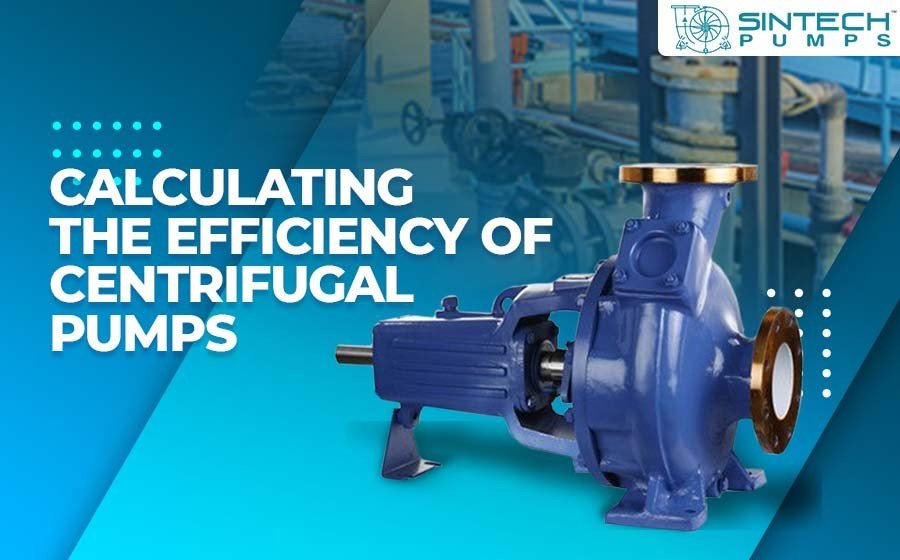Table of Contents
Introduction
Pumps are the heart of water systems, industrial processes, and irrigation setups. However, not all pumps operate at their full potential. A pump that consumes excessive energy or fails to deliver the expected output can become costly over time. This is where pump efficiency becomes critical.
Understanding how to calculate pump efficiency and applying strategies to improve it ensures lower operating costs, longer equipment life, and sustainable performance. This article explains pump efficiency in simple terms, provides calculation methods, and outlines practical ways to improve it.
What is Pump Efficiency?
Pump efficiency is the ratio of the useful energy delivered by the pump to the energy supplied to it. In simpler words, it measures how well the pump converts input power (electricity, fuel, or air) into hydraulic energy (water flow and pressure).
A pump running at 70% efficiency converts 70% of the input energy into useful output, while the remaining 30% is lost as heat, friction, or mechanical losses.
Why Pump Efficiency Matters
- Energy savings: Pumps are major energy consumers in industrial and agricultural systems. Even a small efficiency gain reduces costs significantly.
- Reduced wear and tear: Efficient pumps operate smoothly, lowering stress on components.
- Sustainability: Energy-efficient pumps lower carbon emissions.
- System reliability: Higher efficiency ensures pumps meet flow and pressure demands consistently.
How to Calculate Pump Efficiency
Step 1: Hydraulic Power Output
Hydraulic power (HP) is calculated using:
Hydraulic Power (kW) = (Flow × Head × Gravity × Density) ÷ 1000
- Flow is in cubic meters per second (m³/s).
- Head is in meters.
- Gravity is 9.81 m/s².
- Density of water is usually 1000 kg/m³.
Step 2: Input Power
Input power is the energy supplied to the pump, usually measured in kilowatts (kW) or horsepower (HP).
Step 3: Efficiency Calculation
Pump Efficiency (%) = (Hydraulic Power ÷ Input Power) × 100
Example
If a pump delivers 50 liters per second at 20 meters head with 12 kW input:
- Hydraulic Power = (0.05 × 20 × 9.81 × 1000) ÷ 1000 = 9.81 kW
- Efficiency = (9.81 ÷ 12) × 100 = 81.75%
Types of Pump Efficiencies
Volumetric Efficiency
Measures how much liquid is actually pumped compared to theoretical capacity. Leakage reduces volumetric efficiency.
Mechanical Efficiency
Considers power lost due to friction in bearings, seals, and moving parts.
Overall Efficiency
The combined result of volumetric and mechanical efficiency, showing the pump’s real-world performance.
Factors That Reduce Pump Efficiency
Poor System Design
Oversized or undersized pumps operating far from their Best Efficiency Point (BEP) waste energy.
Cavitation
Bubble formation and collapse inside the pump reduce efficiency and damage components.
Blockages or Fouling
Debris, scaling, or sediment buildup restricts flow, lowering efficiency.
Worn Components
Impellers, bearings, and seals wear over time, reducing pump performance.
Improper Operation
Frequent starts, dry running, or running against closed valves all reduce efficiency.
How to Improve Pump Efficiency
Select the Right Pump
Choosing a pump matched to your flow and head requirements is the first step in ensuring efficiency.
Maintain Proper Alignment
Misaligned couplings increase friction and reduce efficiency.
Regular Cleaning and Inspection
Removing buildup and sediment keeps the pump operating smoothly.
Monitor and Control Pump Speed
Using variable frequency drives (VFDs) allows pumps to match demand, improving efficiency.
Upgrade to Efficient Designs
Modern pumps with improved impeller designs and advanced materials operate more efficiently.
Keep Bearings and Seals in Good Condition
Well-lubricated and intact bearings and seals reduce mechanical losses.
Optimize Piping Systems
Straight runs, fewer bends, and proper pipe sizing reduce friction losses and improve pump output.
Monitoring Efficiency Over Time
Efficiency should not be a one-time calculation. Regular monitoring allows operators to detect performance decline early. Flow meters, pressure gauges, and energy meters can provide real-time insights into efficiency.
Conclusion
Pump efficiency is more than just a technical measurement—it directly affects costs, reliability, and sustainability. By calculating efficiency correctly and applying best practices, users can maximize pump performance while reducing energy use. Regular maintenance, correct sizing, and modern control technologies ensure pumps remain efficient throughout their service life.
FAQs
Q1: What is a good pump efficiency percentage?
Most centrifugal pumps operate efficiently between 65% and 85%. Anything below 60% usually indicates problems.
Q2: Do all pumps have the same efficiency?
No, efficiency varies by pump type, size, and application. Centrifugal pumps differ from positive displacement pumps.
Q3: How often should pump efficiency be tested?
It is best to test efficiency annually or whenever performance drops noticeably.
Q4: Can a worn impeller affect efficiency?
Yes, worn impellers significantly reduce flow and head, lowering efficiency.
Q5: Are VFDs always necessary for efficiency?
Not always, but in systems with fluctuating demand, VFDs can greatly improve efficiency and energy savings.



